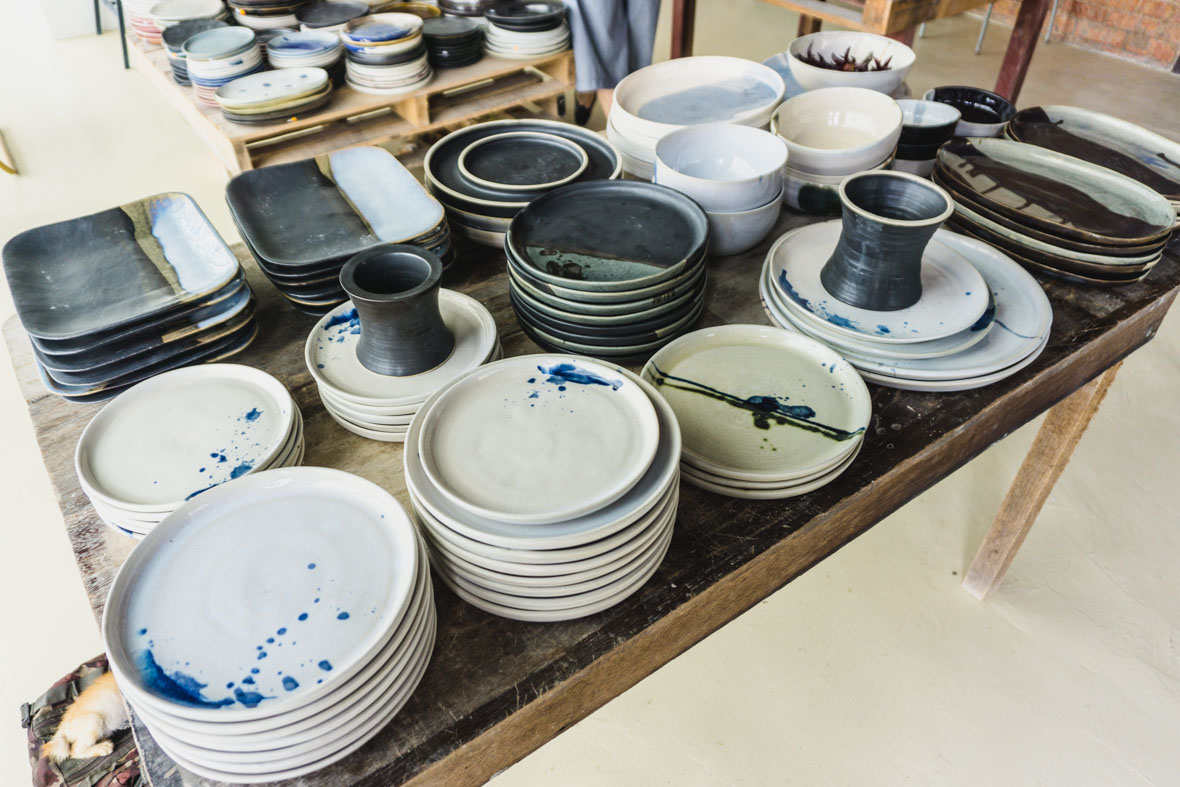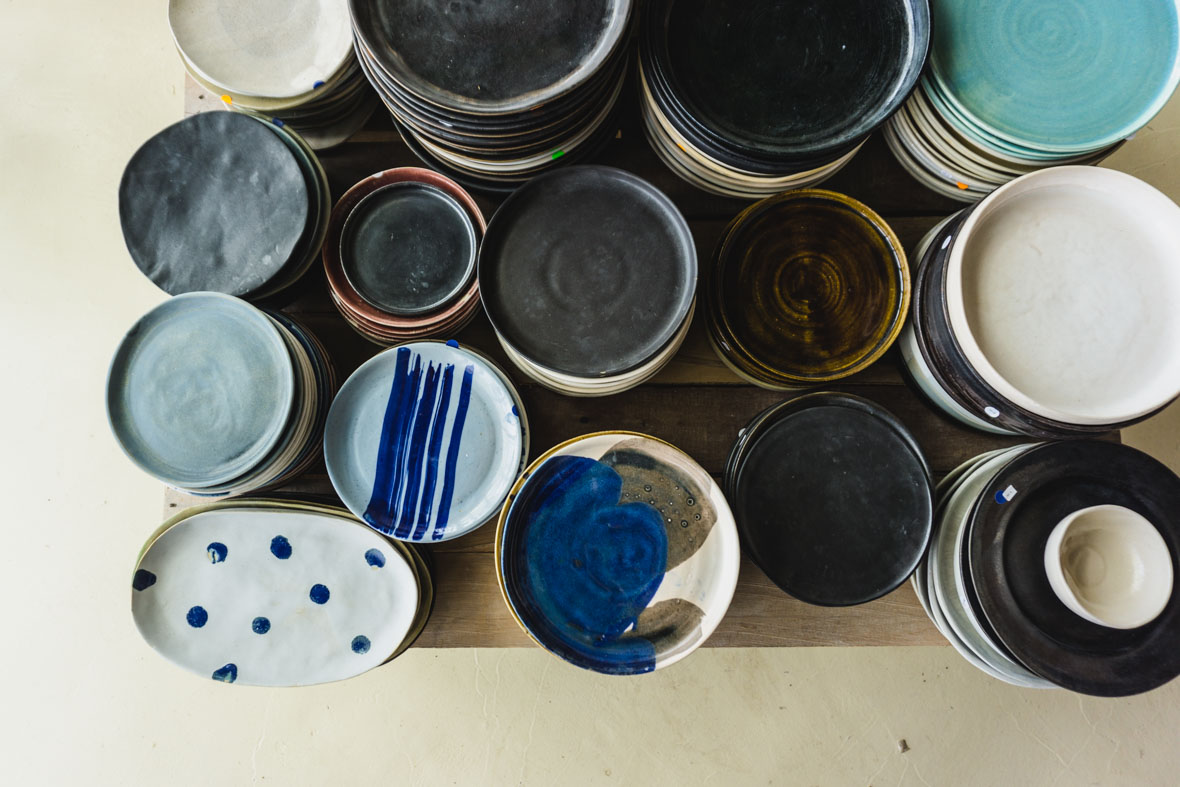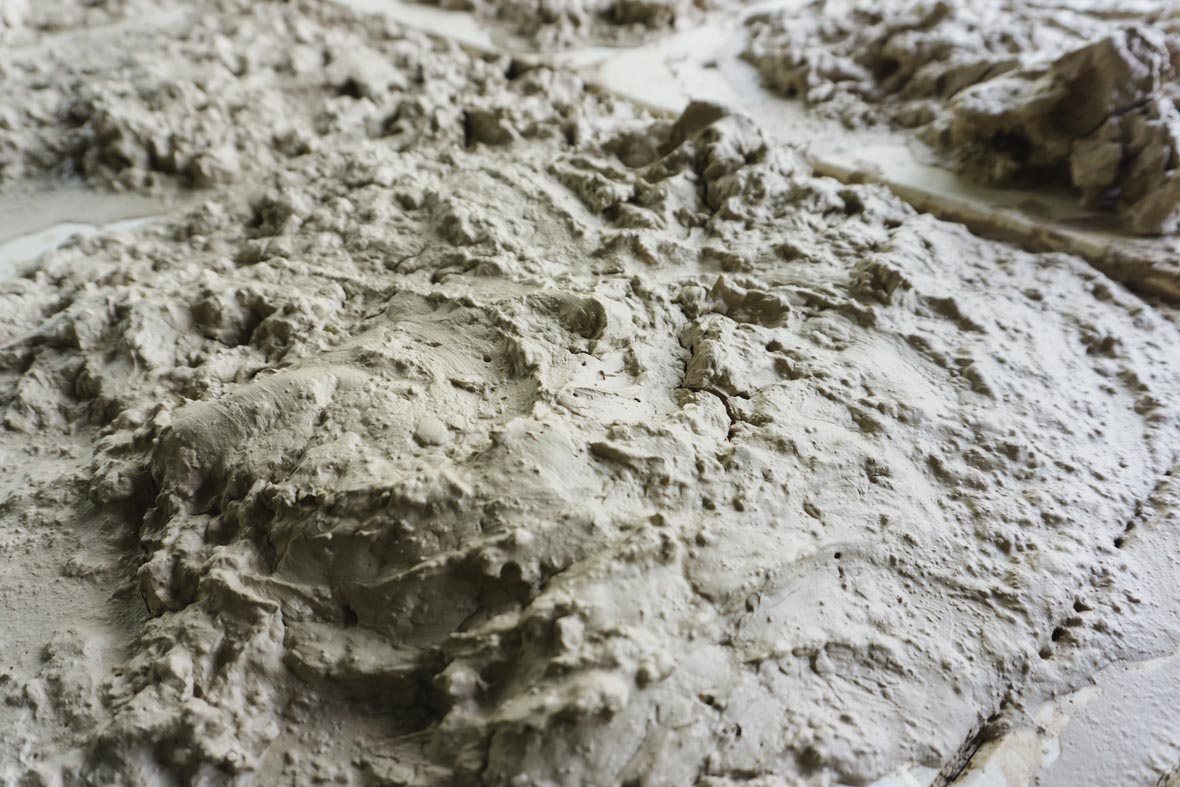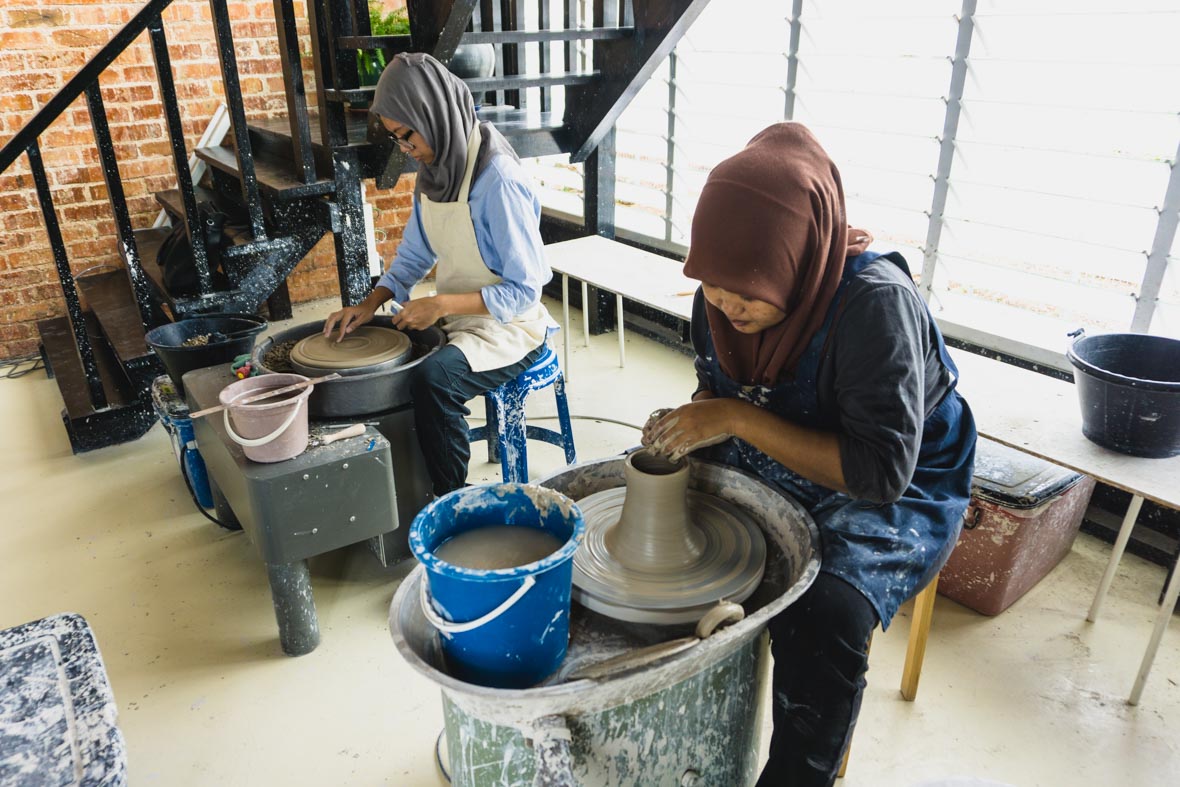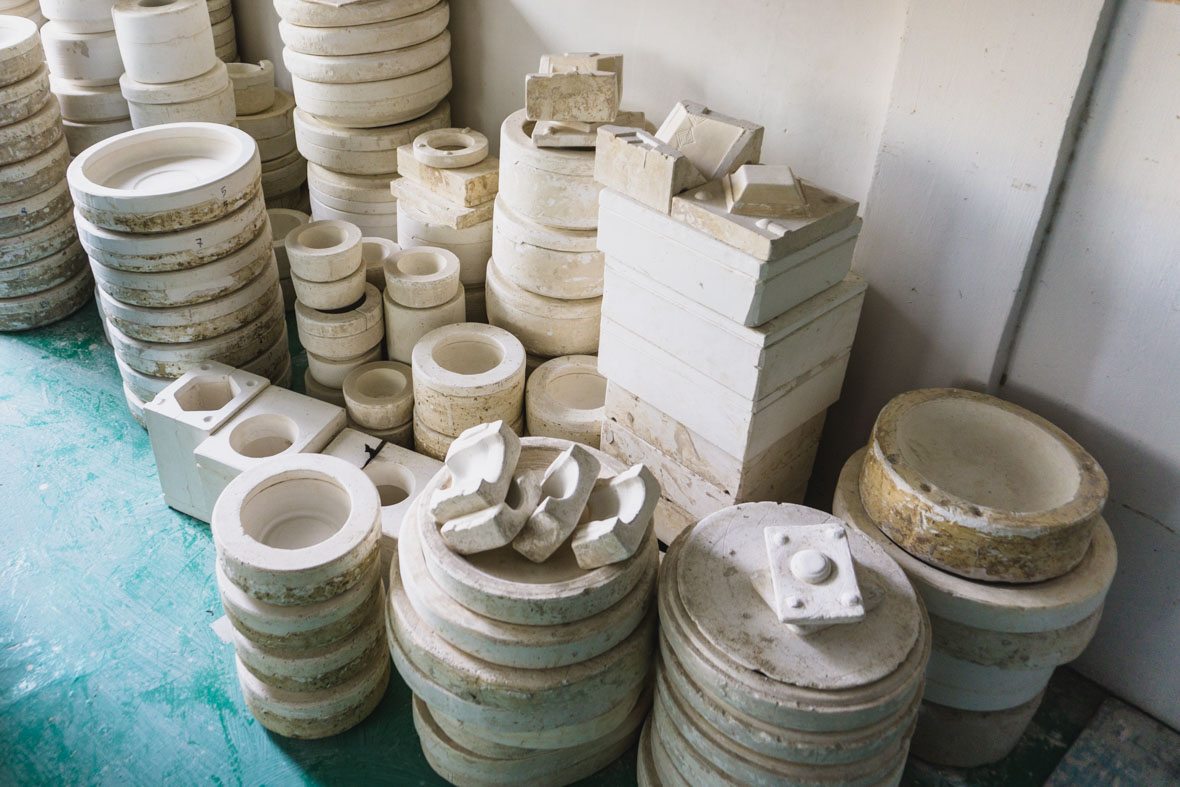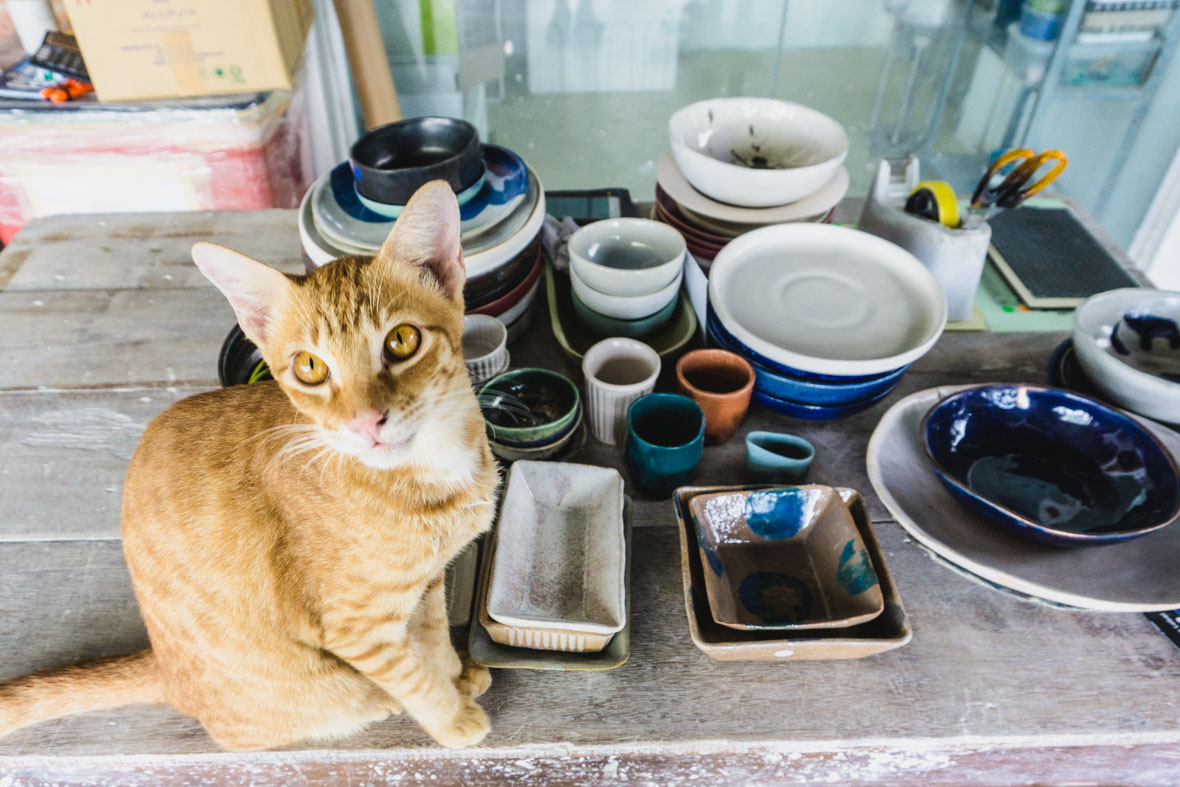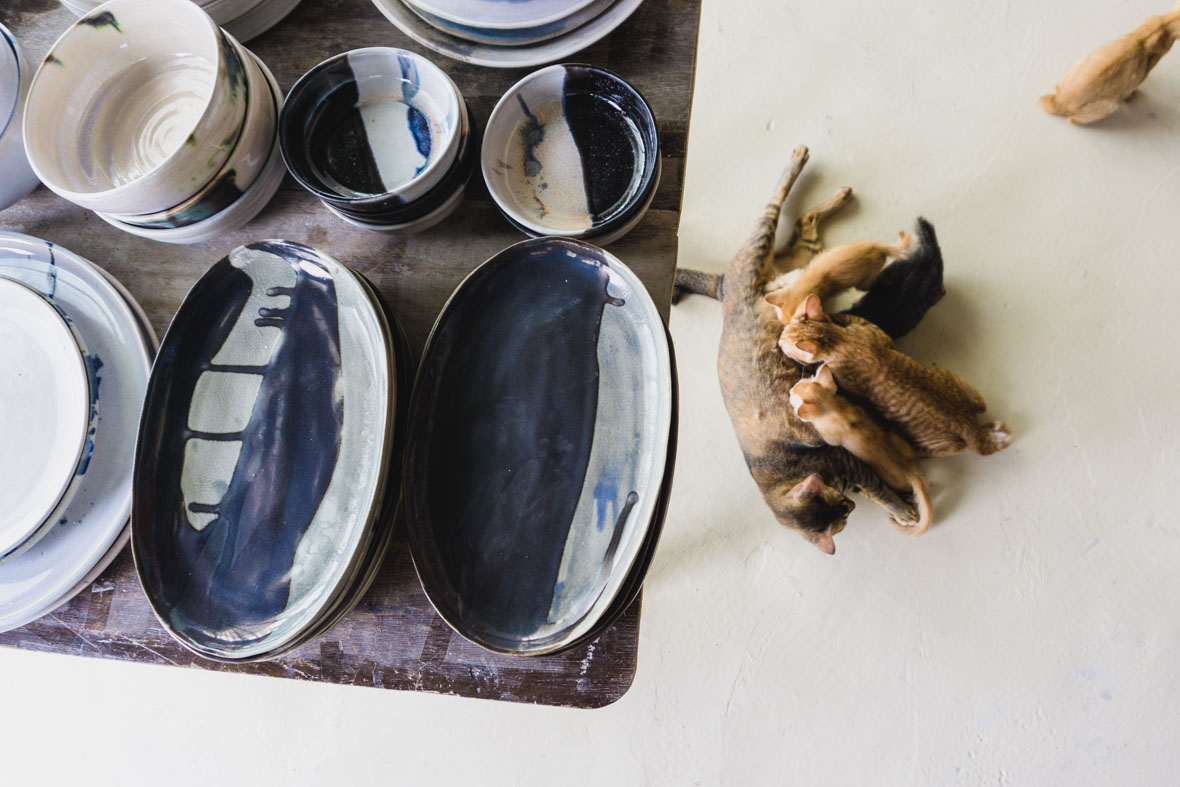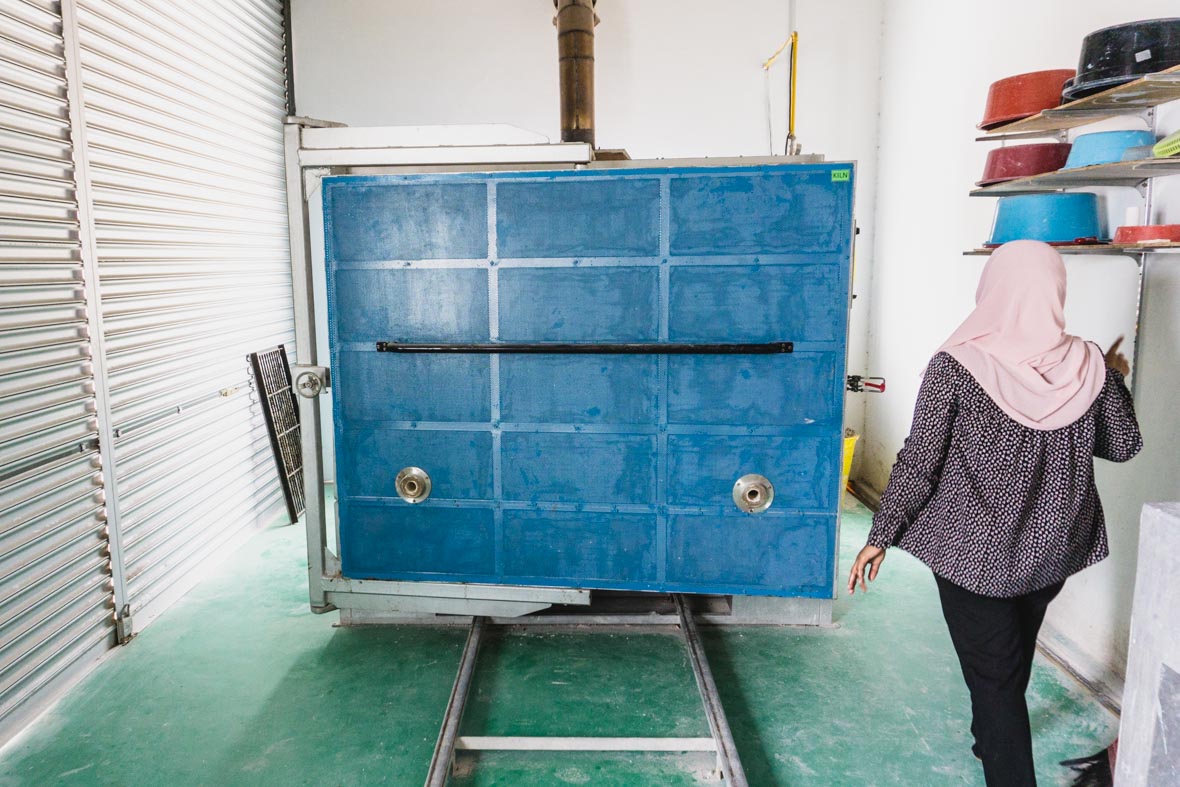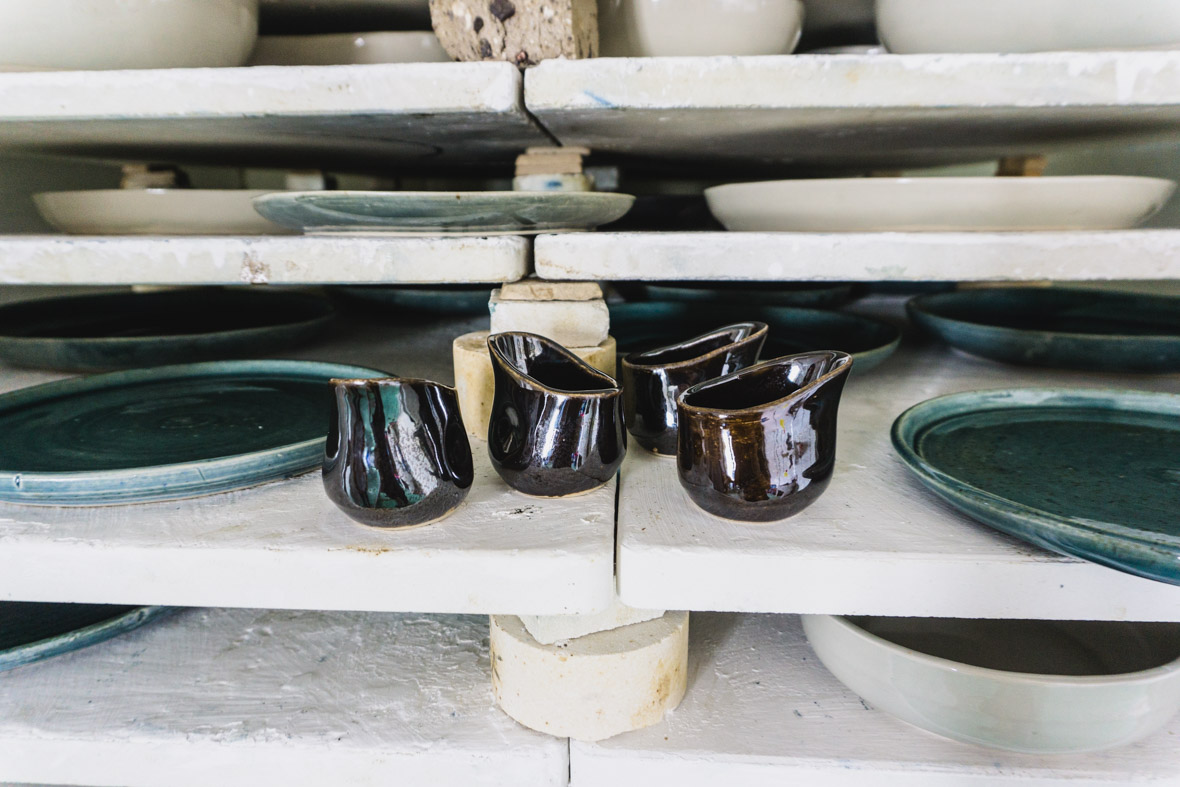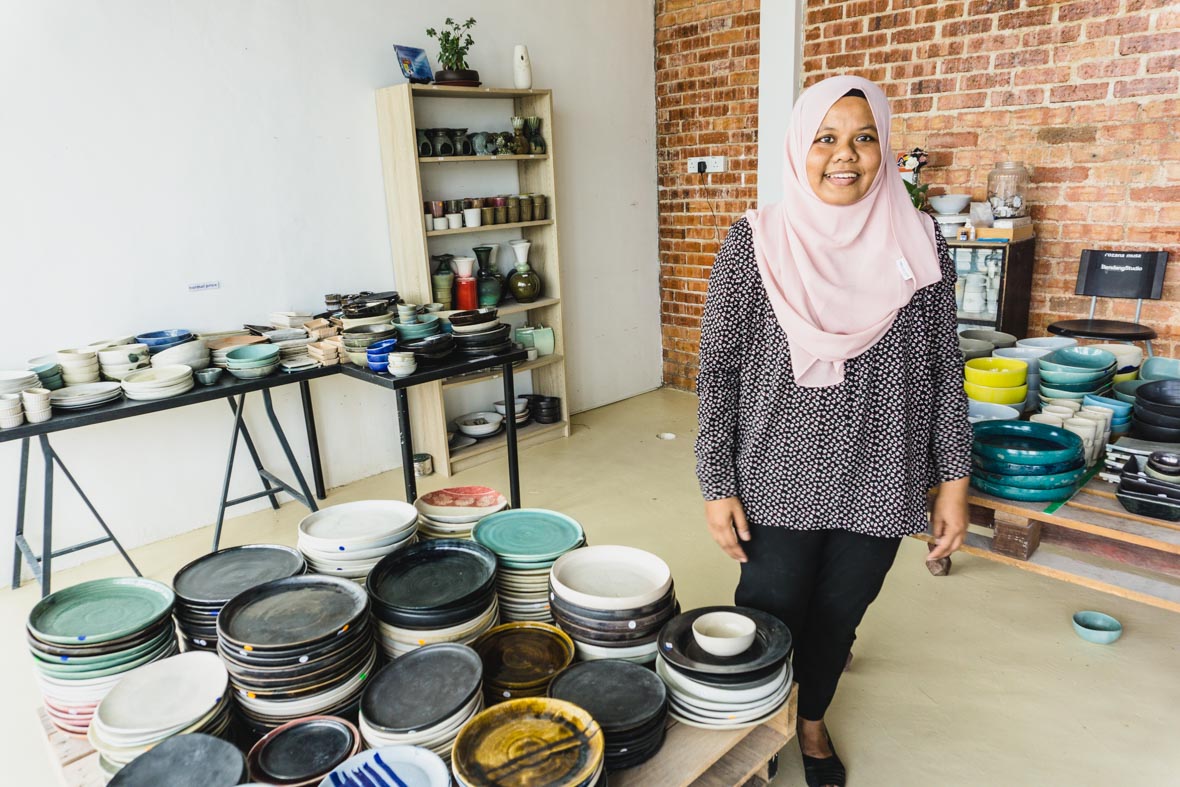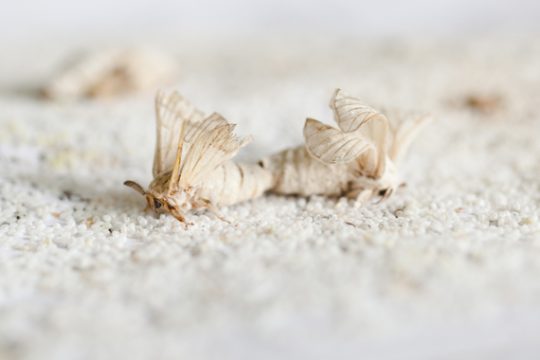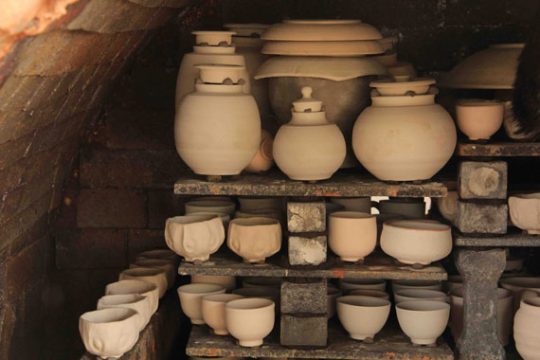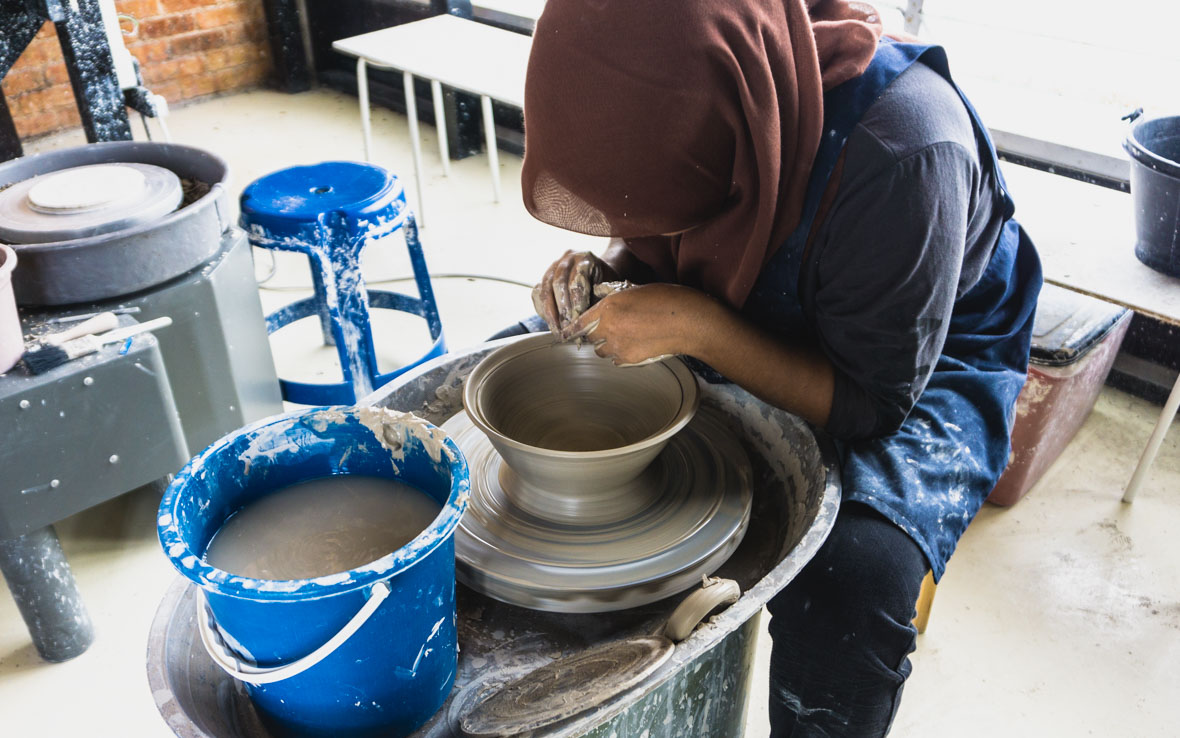
At the edge of the quiet, unassuming village of Kampung Sungai Petai, a half-hour drive out of the rich historic hub of Malacca, lies Bendang Studio, a contemporary ceramics workshop that is making waves in the industry. Having started from humble beginnings, its founder Rozana Musa has developed her own brand and a style of tableware ceramics that’s now highly sought after in Malaysia. Not complacent in entrepreneurial success alone, Musa aspires to mold and fire the Malaysian ceramics scene into a new era.
双溪大年(Sungai Petani)是距离马来西亚历史文化中心马六甲一个半小时车程的村庄,在这个平静的村郊地区,就坐落着Bendang工作室——这就是在业界掀起了不小波澜的当代陶艺工作室。工作室创始人Rozana Musa从零开始,成立了自己的陶瓷餐具品牌,形成自己的独特风格,塑造且推动了马来西亚的陶瓷产业进入一个全新的时代。
Musa’s initial encounter with ceramics came early in her childhood when she unwittingly stumbled upon the core ingredient of ceramics – clay. As a child, she often played with the carmine, clay-rich mud on the riverbank, behind her grandmother’s Malaccan home, sculpting skyscrapers and drawing shapes in the sand and silt. Little did she know, this childhood pastime of hers would translate to a deep-seated love for ceramics in her adulthood. Now, rather than building transient sculptures in the sand, she creates intricate ceramics with a touch of modern flair.
Rozana第一次接触陶瓷是在她童年的时候,她偶然接触到了粘土——而这正是制作陶瓷的核心原料。小时候,她经常到祖母位于马六甲的家后面的河边,用胭脂红色的粘土泥,捏出泥巴大楼,在沙地和淤泥里画画。当时的她并不知道,这种儿时的消遣会在后来变成自己所热爱的陶瓷艺术。现在,她不再仅仅是捏泥巴玩儿了,她打造着精致复杂的现代陶瓷作品。
At Musa’s studio, each piece starts off as a specially tailored clay mixture, containing a blend of silica, feldspar, kaolinite and a slew of other minerals. Then, depending on the particular piece, the clay will either be cast in a mold, shaped by hand on a pottery wheel, or cast and then finished off by hand. The product from the shaping process is then left to dry for several hours before being baked in a kiln at 840°C for six hours through a process known as biscuit firing. The brittle “biscuits” are then cooled for a day before being colored with a glaze through a subsequent firing process at 1100°C for eight hours. All the recipes for the glaze are developed by Musa and her team, using metal oxides such as cobalt, copper, sodium, and calcium as dyes. Though each piece is somewhat planned, Musa admits she and her team often improvise on the fly, especially when they’re struck by moments of artistic inspiration.
在Rozana的工作室,每一件作品都是用专门定制的粘土混合物制成的,需要通过复杂的配方,将硅土、长石、高岭土和其它矿物混合而成。然后,根据不同的创作理念,将这些粘土或盖上模具定型,或在轮盘上进行手工拉坯,或先用模具定型,再手工处理完成。定型之后,这些陶坯需要先被放置风干,再放到一个840℃的陶瓷窑里焙烧6 个小时,这个工序被称为“素烧”(biscuit firing)。素烧好后的坯体需要冷却一天,然后施釉,再经历一次烧制工序,这一次需要在1100℃下焙烧8小时。所有釉彩的配方都是Rozana和她的团队亲自研究出来的,采用的是钴、铜、钠和钙等金属氧化物作为染料。虽然每件陶瓷作品都是按照预定设计制作的,但当灵感突然闪现的时候,Rozana说她和团队也经常会即兴发挥。
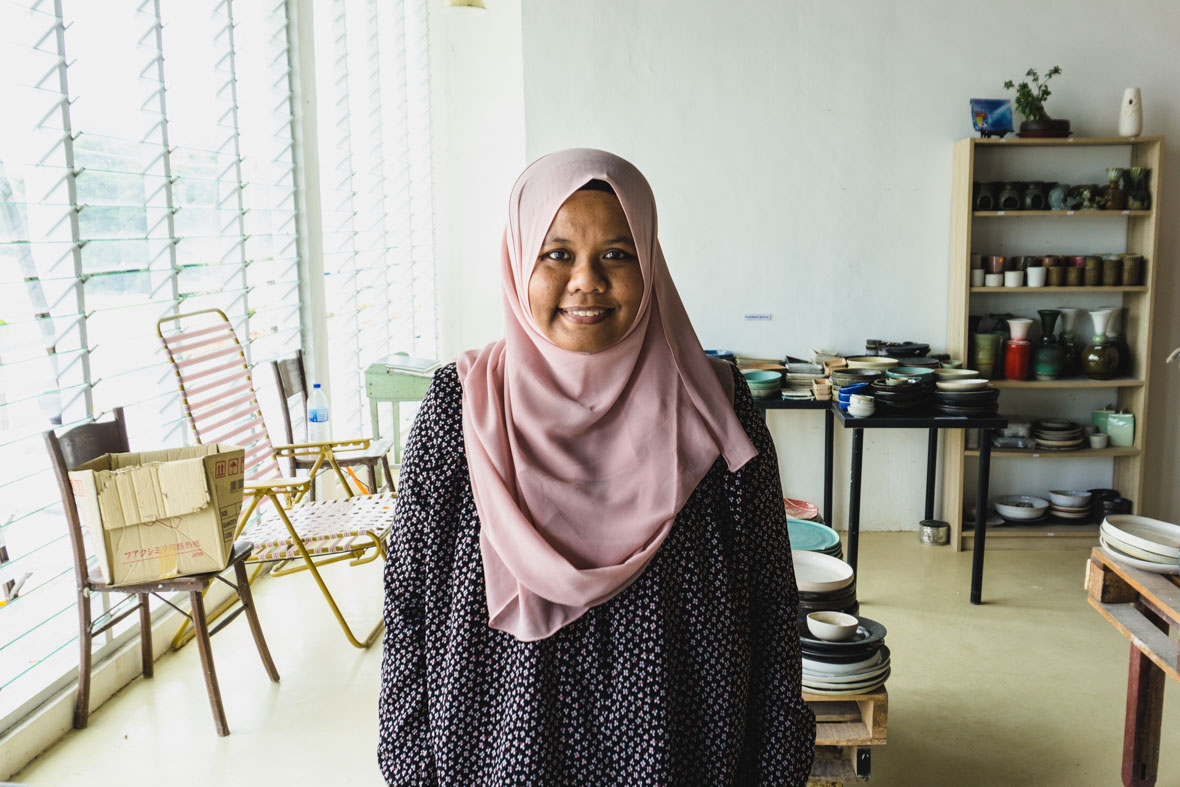
This free, unshackled approach can be seen throughout her studio – a splash of cobalt blue on an ivory plate, a shimmering gold brushstroke on the lip of a teacup, an embossed batik print on a china tray. Even her studio itself exudes this sense of unbridled freedom; The airy, glass-fronted facade, the high ceilings and brick walls painted in hues of white, the plates and bowls haphazardly stacked on low tables, all the while her cats sashay around the displays, jumping from table to table, weaving in between the dishware, while her apprentices, Nisa and Aliah, work with quiet focus and intent at their pottery wheels.
Browsing through her wares, one gets the sense no two pieces of Musa’s ceramics are the same. Each of her creations has its own beauty, its own flaws, and its own identity. At first glance, they all seem too beautiful to use, but their beauty belies a utilitarian sturdiness. Perhaps this combination of beauty and utility is the driving factor behind the surge of demand for her line of ceramics, so much so that she’s now often booked up months in advance with order requests from renowned restaurants throughout Malaysia, and even some from Paris and Japan!
这种自由、不受束缚的创作方式在她的整个工作室随处可见,譬如是象牙碟上的一抹钴蓝色彩,茶杯杯口上的一划闪耀金色,以及陶瓷托盘中的浮雕蜡染印花。就连她的工作室本身也散发着肆意的自由氛围:透明的玻璃幕墙,高高的天花板和砖墙涂成白色色调,碗碟随意地堆放在低矮的桌子上,而她的猫则随意地漫步其中,在各张的桌子上来回跳跃,穿梭于餐具之间,而她的两名学徒Nisa和Aliah则安静专注地在轮盘上拉坯。
一眼扫过她的陶瓷作品,你会发现,Rozana的陶瓷作品没有两件是相同的。她的每个作品都有其独特的美丽,独特的瑕疵,独特的个性。乍一看,这些陶瓷似乎都太漂亮了,让人舍不得用,但它们的美丽外观之下却是实用的功能性。或许,这种美观与实用的结合是她的陶瓷作品越来越受欢迎的原因,她收到的订单非常之多,许多马来西亚的著名餐厅常常需要提前许多个月预订,甚至还有来自巴黎和日本的订单!
Despite Musas’ current success, her road to where she is was wrought with challenges. Like most young Malaysians, pursuing such an unconventional career wasn’t really on the cards in her young adulthood. But then, through perhaps a stroke of serendipity, she enrolled in the art and design program at the Universiti Teknologi MARA (UiTM), choosing to major in ceramics. When she graduated, however, Musa found it difficult to advance her skills or come across opportunities for work, largely due to the immaturity of the Malaysian ceramics industry. Finding a mentor was difficult, demand for handcrafted ceramics was slow, and the equipment and barriers to entry were high (a ceramics kiln alone can cost upwards of 3,000 USD). According to Musa, of the dozen or so students who graduated along with her at UiTM, only one or two still remain in the craft. Fortunately for her though, she eventually found a mentor in Umibaizurah Mahir Ismail, an established Malaysian ceramics artist whose works have been featured in exhibitions in Japan, Korea, and Pakistan.
尽管Rozana目前很成功,但一路走来,她也经历了很多的艰难挑战。和大多数年轻的马来西亚人一样,要追求这样非传统的职业,在她年轻的时候都会觉得是很不现实的事情。后来也许是机缘巧合,她入读了马拉工业大学(Universiti Teknologi MARA)的艺术与设计课程,选择主修陶艺。但是毕业后,Rozana发现很难能找到提升的机会,主要是因为马来西亚的陶瓷产业尚不成熟。要找到导师很困难,社会对手工制作的陶瓷需求很少,进入这个行业还需要一定的设备,也有很高的壁垒(一个陶瓷窑炉价格至少3000美元)。Rozana说,从马拉工业大学毕业的十几名陶艺专业学生,只有一两个还留在这个行业。她很幸运,因为她最终找到Umibaizurah Mahir Ismail作为自己的导师。Umibaizurah Mahir Ismail是马来西亚著名的陶瓷艺术家,她的作品曾在日本、韩国和巴基斯坦展览。
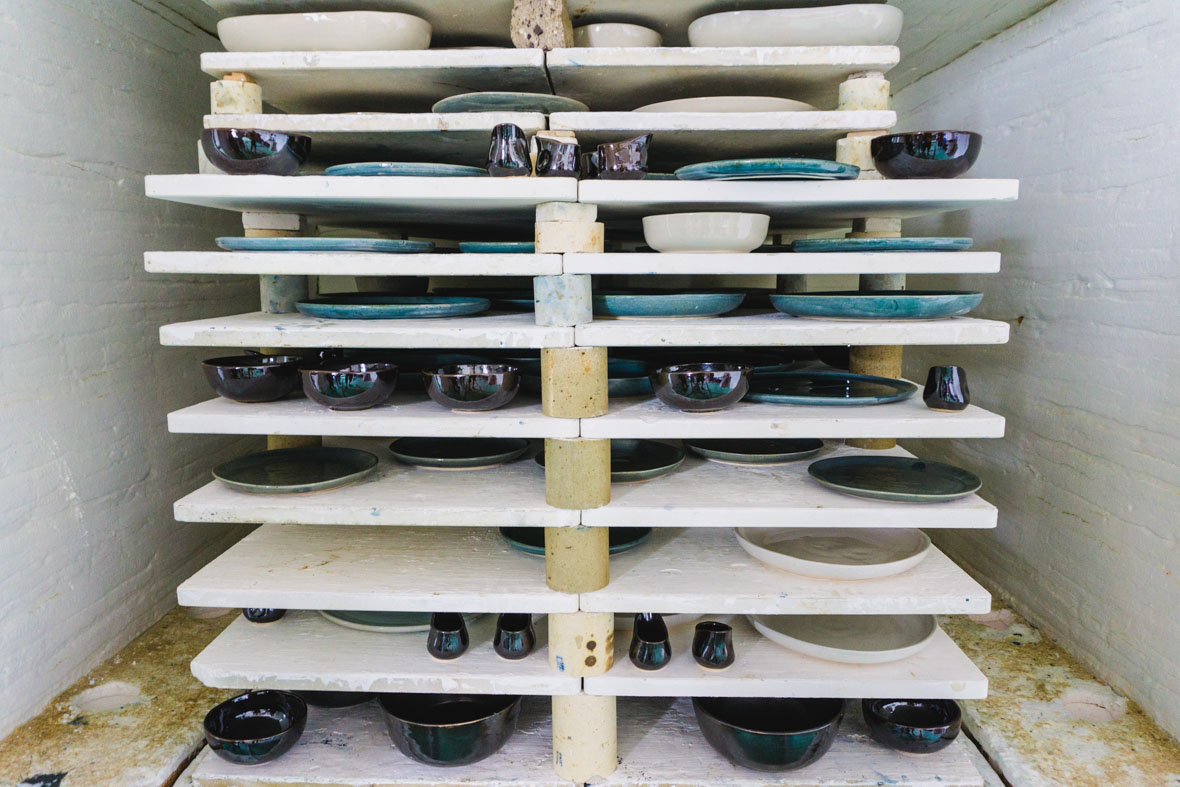
After just several months of apprenticeship, Musa was inspired to start her own business, and thus Bendang Studio was conceived. She started off small, selling trinkets and accessories to a very niche market. Not long after, she wanted to expand her business, but being bootstrapped, buying an industrial ceramics kiln was out of the picture. Undeterred and being the self-starter that she is, Roza enlisted the help of her ex-lecturer at UiTM to build a fiberglass kiln from scratch. This move not only saved money, but her design was so innovative it won them an award that came with more than 4,000 USD in prize money from the government. And for the past seven years, Rozana has continually reinvested her profits, along with the winnings, back into her studio, buying a new kiln, and more recently, refurbishing the whole space. Rozana’s dedication and innovativeness have turned Bedang Studio what it is today – an impressive studio that’s leading the way for Malaysian ceramics.
在当了仅仅几个月的学徒之后,Rozana有了创业的冲动,于是成立了Bendang工作室。一开始它只是一个非常小的工作室,针对非常小众的市场售卖各种小饰品和配件。但过了没多久,Rozana想扩大自己的业务,却因为是白手起家,根本没有资金去购买工业用的陶瓷窑。但Rozana不愿服输,她找来自己以前在马拉工业大学的老师,一起从零开始打造出一个玻璃纤维窑。她不仅因此解决了自己的资本问题,更凭借这个创新的设计获奖,获得由政府资助的超过4000美元的奖金。在过去的七年间,Rozana将获得的收入和资金不断再投资到她的工作室中,购买了一个新的陶瓷窑,最近还将整个工作室重新装修。正是Rozana的奉献精神和创新让Bedang工作室成为了如今这个令人印象深刻的陶瓷工作室,带领着马来西亚的陶瓷产业开拓发展。
Musa’s studio sits right by the through road between Malacca City and Kampung Sungai Petai, two vastly different places, one being a bustling, cultural city, and the other, a secluded, relatively unknown village. The location is perhaps fitting, as Musa’s brand of handcrafted ceramics has connected two similar yet separate worlds – the commercial, utilitarian mass-market ceramics industry, and the niche artistic, dreamy space of ceramic artists. Over the past years, Bendang Studio has brought glimpses of that artistic world to the mass market, with restauranteurs clamoring over her wares before they are even made. Perhaps it is a sign of changing times, of a greater artistic appreciation for ceramics, of the fledgling state of the handcrafted ceramics scene in Malaysia maturing into something significant. Musa certainly hopes so, and if her recent growth is anything to go by, there will certainly be more cobalt splashes and golden brushstrokes to come.
Rozana的工作室坐落在连通马六甲和双溪大年的道路之间,这是两个截然不同的地方,一个是繁华的文化名城,另一个是鲜为人知的僻静村庄。这样的位置也许正契合了Rozana的手工陶瓷品牌,因为它也是在连接两个相似又截然不同的世界——商业功利的大众陶瓷产业与小众的艺术陶瓷制作空间。在过去几年间,Bendang工作室将这种陶瓷艺术世界不断展示给大众市场,许多餐厅甚至还没看到成品就已经争相下单购买。也许这是时代变迁的标志,代表着人们对陶瓷有了更大的艺术鉴赏兴趣,代表着马来西亚手工陶瓷行业日渐成熟。Rozana当然希望如此,以她近期的成长来看,未来她也一定会挥洒出一个充满钴蓝和亮金色的陶瓷世界。
Address:
KM 20, Kampung Sungai Petai
78000 Alor Gajah
Malacca, Malaysia
Website: www.bendangstudio.com.my
Facebook: ~/bendangstudio
Instagram: @bendangstudio_official
Contributor & Photographer: Yi Jun Loh
地址:
马六甲马来西亚
78000 亞羅牙也
KM 20, 双溪大年市
网站: www.bendangstudio.com.my
脸书: ~/bendangstudio
Instagram: @bendangstudio_official
供稿人与摄影师: Yi Jun Loh

